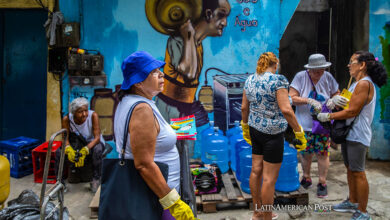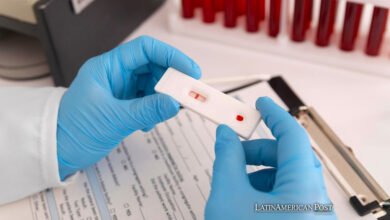Head Injuries at the World Cup in Qatar: a Risk for Players?
After Several Days of the Maximum Competition in the World Cup in Qatar, There Have Been Many Surprises, not Only in Terms of the Scores, but Also in Terms of Injuries and the Health of the Players. In Addition, FIFA has a New Medical Protocol.

Photo: FIFA
LatinAmerican Post | Daniel Alejandro Vergara
Listen to this article
Leer en español: Golpes en la cabeza en el Mundial de Catar: ¿un riesgo para los futbolistas?
In the Argentina-Saudi Arabia match and in the England-Iran match, some players suffered blows to the head that set off alarm bells in the medical corps and led to the use of the new FIFA Medical Protocol for concussions.
Previous versions of the World Cup were widely criticized for not having protocols regarding injuries that can be as serious as a concussion. That is why this new standard, whose motto is "Suspect and Protect", is useful and innovative. According to the National Institutes of Health (NIH): “Concussion can result from a very rapid movement of the brain or from hitting a wall of the skull. This sudden movement can stretch and damage brain tissue and set off a chain of damaging changes in the brain that interfere with normal brain activities.”
In the match between Argentina and Saudi Arabia, near the end of the game, the Albiceleste team launched a cross that the Saudi goalkeeper Mohammed Al Owais went to reject with his fists, but with his knee he hit the head of his defender Yasir Al-Shahrani. After the strong blow, the defender had to go out on a stretcher and was then taken to the Riyadh hospital, where he underwent a series of surgeries that will leave him out of the World Cup. According to a FIFA statement, the defender: "He suffered a fractured jaw, facial bone clefts and internal bleeding, for which he was immediately operated on."
On the other hand, on November 21, in the England – Iran match, at the first 15 minutes of the game, the Iranian goalkeeper Alireza Beiranvand fell to the ground after a strong collision with his teammate Majid Hosseini. After the clash of heads, the goalkeeper, who also had a cut on his nose, was treated by the team's medical team and returned to the game, unfortunately minutes later he had to ask for a change because he did not feel very well.
Given what happened, FIFA's main doctor, Andrew Massey, declared on the FIFA Living Football program: "FIFA's priority is to protect the players, and prevent them from staying on the pitch until the severity of a brain injury is evident. It should be noted that an impact to the head, causing a concussion, can have serious post-traumatic consequences, including disabling the player from continuing his career, lifelong medical consequences, or even death. For this reason, timely care is so important.
We recommend you read: The 7 new soccer rules that we are seeing in the Qatar 2022 World Cup
With this new protocol, an extra change is also implemented, in addition to the 5 already existing (new in this World Cup), in case a player suffers a concussion during the 90 minutes. “It's a guide for team doctors and medical practitioners, alerting them to how best to treat a concussion or potential football concussion injury,” Massey said.
FIFA has published on its website and has sent to each of the medical staff of the national teams this document of about 21 pages in which information can be found such as:
- Management of concussions.
- Classification of concussions.
- Preliminary medical examination of trauma.
- Diagnosis and medical attention during the first 72 hours.
- Gradual return to sports activity.
Despite all the scandals that this World Cup has unleashed, the Qatar World Cup will undoubtedly go down in history for being the first to develop a manual and a tool that focuses on the neurological health of players. This allows the modification of some rules that had never changed for the well-being of the footballers.




